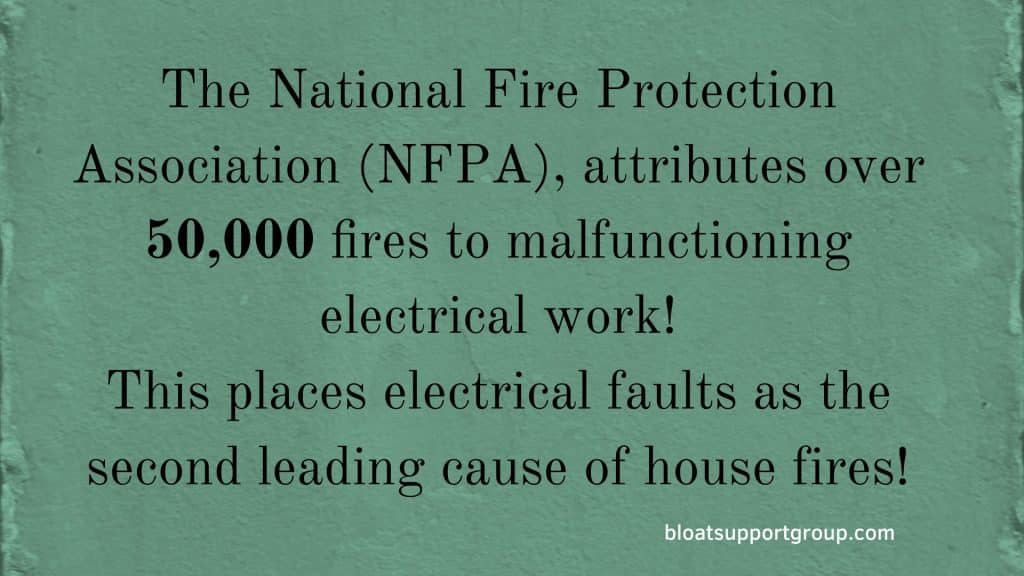A circuit breaker is a crucial component in an electrical system. It is designed to detect abnormalities within the electrical network and isolate power and consequently this prevents electrical fires and other hazards.
The device works by interrupting the flow of electricity in the event of a fault, failure to which prolonged over current or over voltage may cause overheating and arching of conductors.

It is no doubt that circuit breakers saves lives, and protects property.
In this article, we’ll explore the workings of circuit breakers, how they detect and respond to electrical faults, and their role in keeping us safe.
Contents
What is a Circuit Breaker?
A circuit breaker is a safety device that automatically cuts off the flow of electricity in a circuit when it detects an abnormal electrical condition.
The basic function of a circuit breaker is to protect electrical circuits and appliances from excessive currents and overloads that can lead to electrical fires or equipment damage.
Circuit breakers are typically found in the electrical distribution panel or fuse box of a home or building.
They are also widely used in industrial facilities, power plants, and other applications where electrical overloads and faults can occur. To a great extent, circuit breakers have replaced the historical fuse system.
How Do Circuit Breakers Work?
Circuit breakers operate on the principle of electromechanical or electronic sensors that detect electrical overcurrent and trip the breaker mechanism in a fraction of a second.
The basic working of a circuit breaker can be explained in the following table::
| Mode of Operation | What Actually Happens | |
|---|---|---|
| 1 | Normal Circuit Operation | During normal circuit operation, the breaker’s switch is in the closed position, allowing current to flow through the circuit and power electrical devices. |
| 2 | Abnormal Current Flow | In the event of abnormal current flow, such as a short circuit, the breaker senses and trips the breaker mechanism. This is possible because excessive current operated the magnetic circuit |
| 3 | Switch Operates to Open Position | The tripping mechanism of the breaker cuts off the electricity supply by moving the switch to the open position, and the flow of electrical current is interrupted. |
| 4 | Fault Isolation | By cutting off the electrical current, the fault is isolated. This eliminates further power or heat strain to the conductors or appliances hence reducing the risk of electrical fires, and preventing potential damage to electric devices. |
| 5 | Resetting the Circuit Breaker | If the fault is no longer existent, the circuit breaker can be set back to the ON position. But in case the fault conditions still exist, setting the breaker to ON position will still cause it to trip again. |
It is apparently clear that, without a circuit breaker to discontinue electricity to a faulty appliance or conductor short circuit, a fire is likely to occur.
Read Also: How to Put Out an Electrical fire
What are The Different Types of Circuit Breakers?
Circuit breakers come in diverse types, each designed to manage distinct levels of electrical voltage and current. The most common types of circuit breakers are:
1. Miniature Circuit Breaker (MCB)
MCBs are common in residential and small commercial applications.
These breakers are designed to handle up to 100 amps and are usually reset manually.
2. Molded Case Circuit Breaker (MCCB)
MCCBs are commonly used in industrial applications.
They can interrupt high levels of electrical currents (for example 2.5kA) and you can either reset them manually or automatically.
3. Residual Current Circuit Breaker (RCCB)
RCCBs are designed to detect ground faults and provide protection against electrical shock.
They are now a legislative requirement in the US and UK, for example, and are commonly used in bathrooms, kitchens, and other areas where water may be present.
4. Ground Fault Circuit Interrupter (GFCI)
A close associate to the RCCBs are the GFCIs. They are also safety devices designed to protect against electrical shock.
They are installed in areas prone to wet conditions such as kitchens, bathrooms, and outdoor outlets. GFCIs operate by detecting a ground fault and interrupting the flow of electrical current instantaneously.
Benefits of Circuit Breakers
Circuit breakers offer a number of notable advantages over the traditional fuse system that include;
1. Easy to Reset
Circuit breakers can be easily reset by flipping the switch on the breaker panel unlike a fuse that would need to be replaced.
It is also very easy to spot a tripped CB as opposed to a blown fuse in the majority of the situations. This saves time and reduces the cost of maintenance.
2. Protection Against Over Currents and Over Voltages
Circuit breakers protect against electrical overloads, short circuits, and other electrical hazards that could lead to equipment damage or fires.
Therefore, you are likely to use your electrical appliances for a long period of time with no need to replace them every time there is an electrical fault.
3. Durability
Circuit breakers last longer than fuses as they are not damaged when tripped, eventually saving you cost and hassle.
4. Safety
Circuit breakers are recognized by leading safety organizations as a necessary means of protection against electric shock and injury.
Of course this is achieved by cutting off the electrical supply when an abnormal condition occurs in the electrical system.
Conclusion
Circuit breakers are essential safety devices that play a critical role in preventing electrical fires, electrocution, and other hazards.
They work by interrupting the flow of current when an abnormal electric current is detected to isolate the fault.
Knowing how circuit breakers work and their role in protecting electrical systems and appliances can help you better maintain and protect your electrical systems.